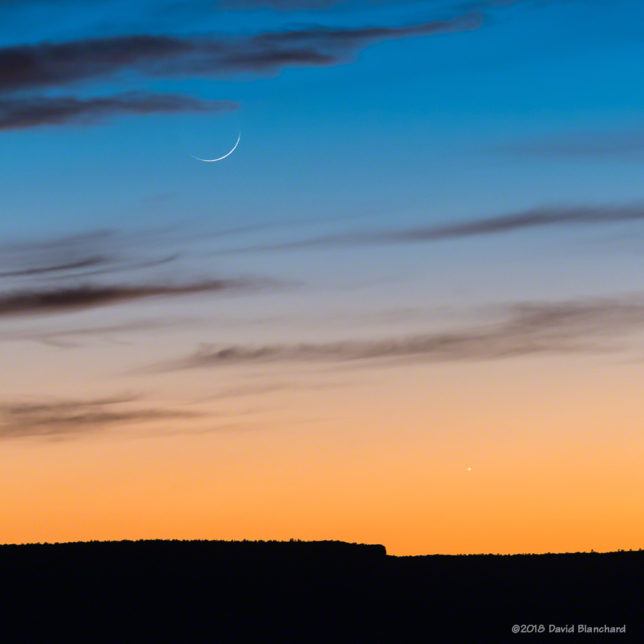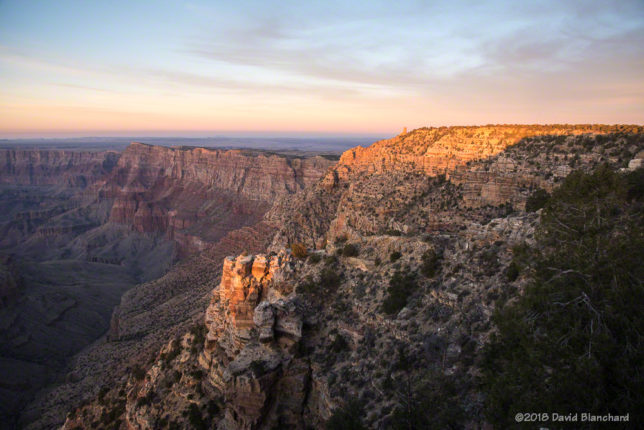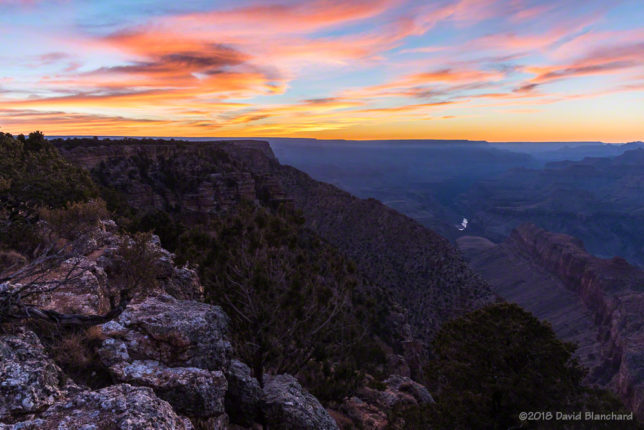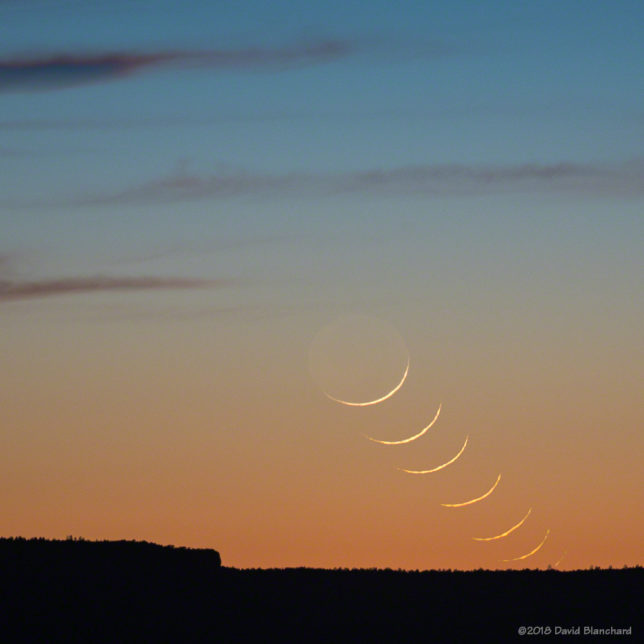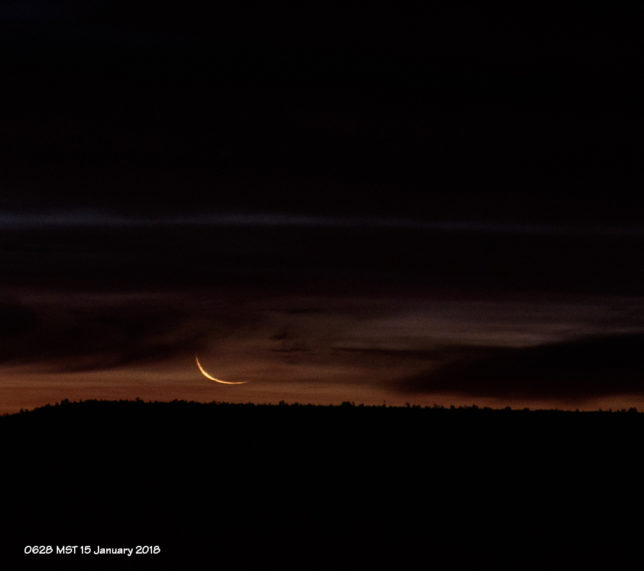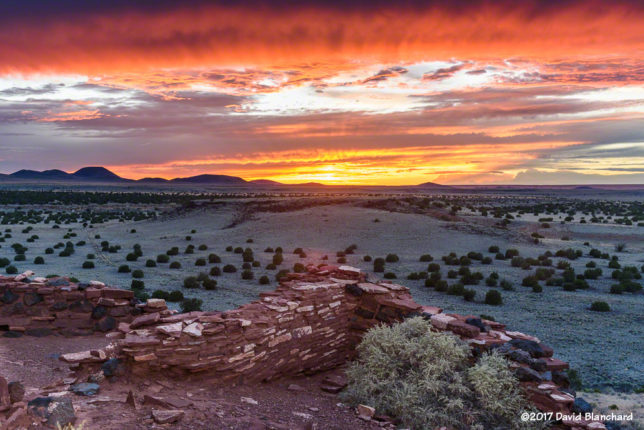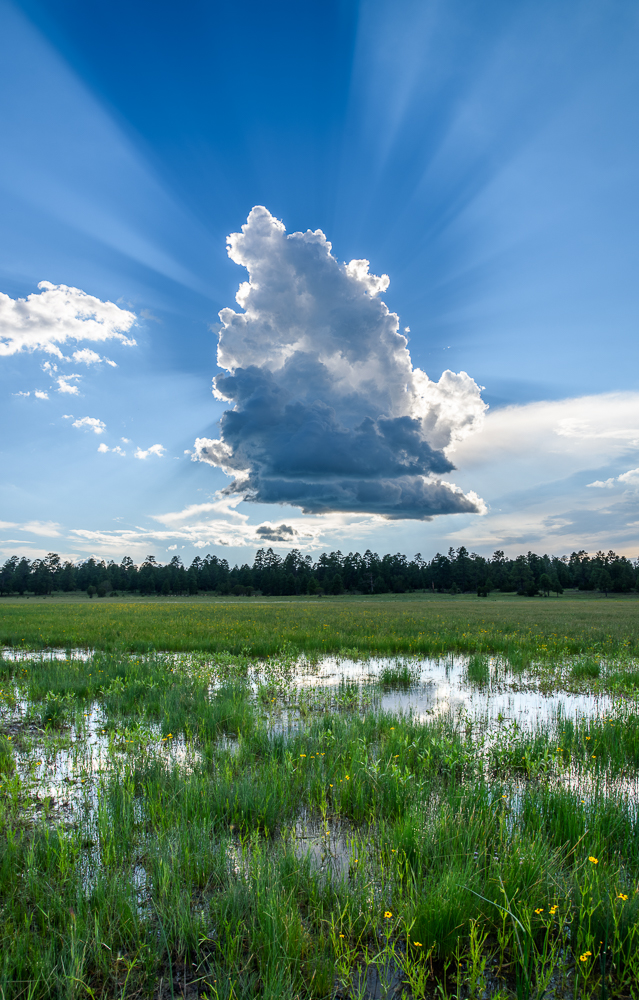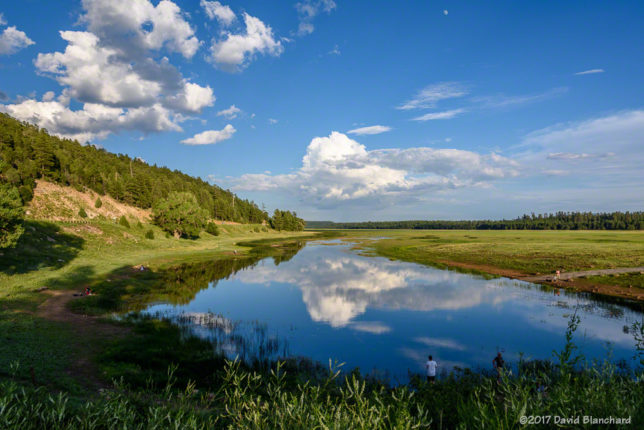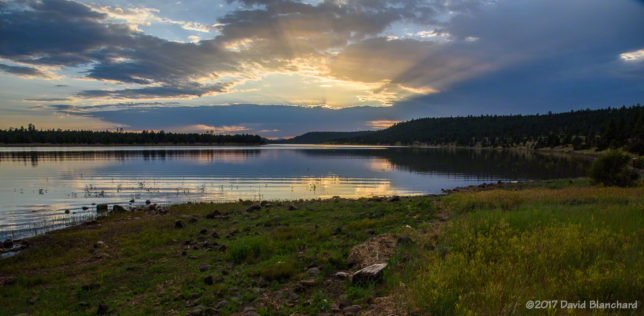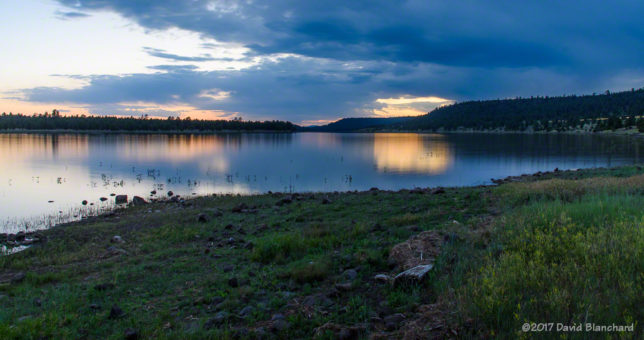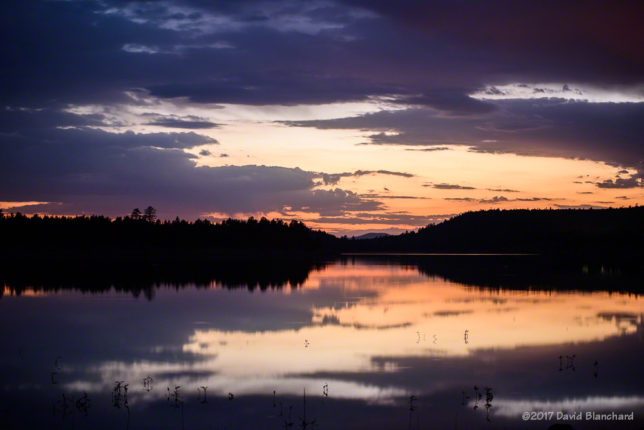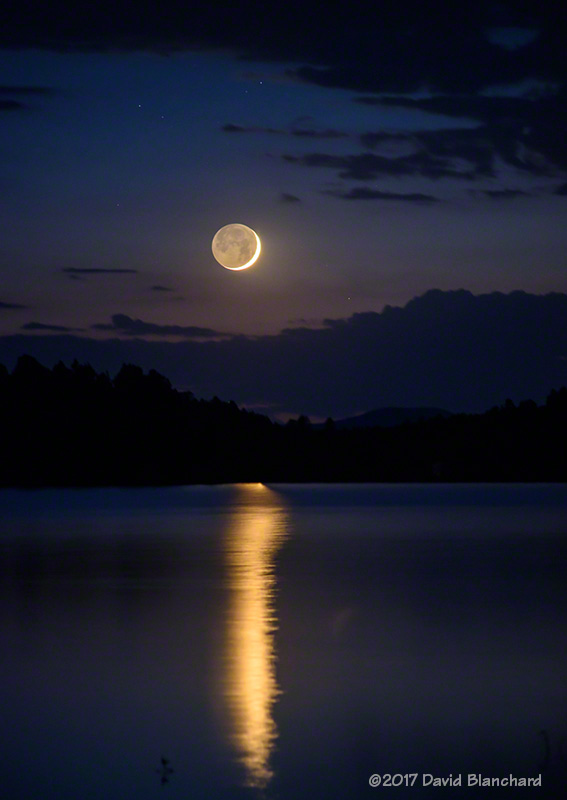A bit over a week ago (18 March 2018), we had a triple conjunction in the sky. Venus and Mercury had been in the evening sky for a few weeks—and now a crescent Moon was going to join them in the evening. Weather permitting, I was interested in capturing images of this event. I headed out towards the Mormon Lake Overlook which would give me a good view of the western sky as well as the possibility of reflections of these sky objects in the shallow waters of the lake.
While waiting for the sky to darken, I was treated to a few minutes of sunset colors on some interesting wave clouds. More on that below.
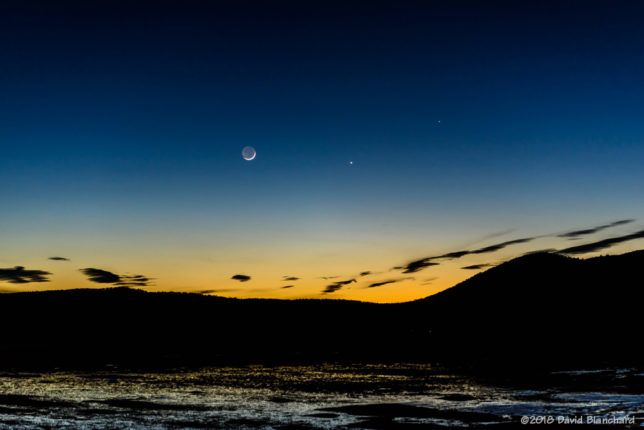
The Moon and Venus are easily visible in this image taken at 7:20 P.M. MST while Mercury is a bit harder to see to the right and above Venus. A second image taken at 7:29 P.M. shows all three bodies quite clearly. And, as I had hoped, there were reflections in the water.
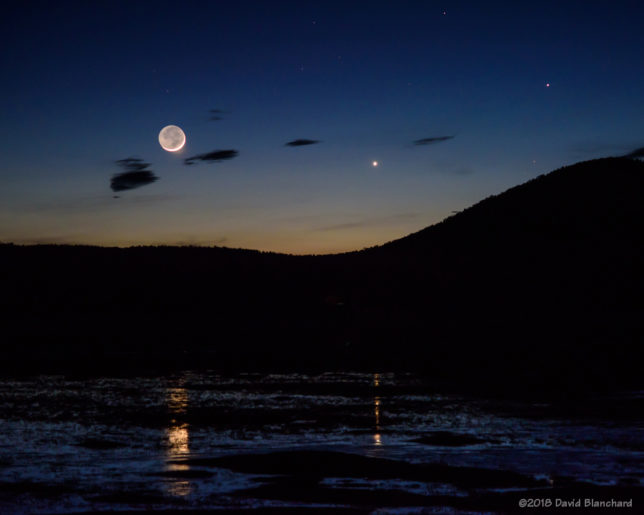
This is how Venus and Mercury looked earlier in the month.
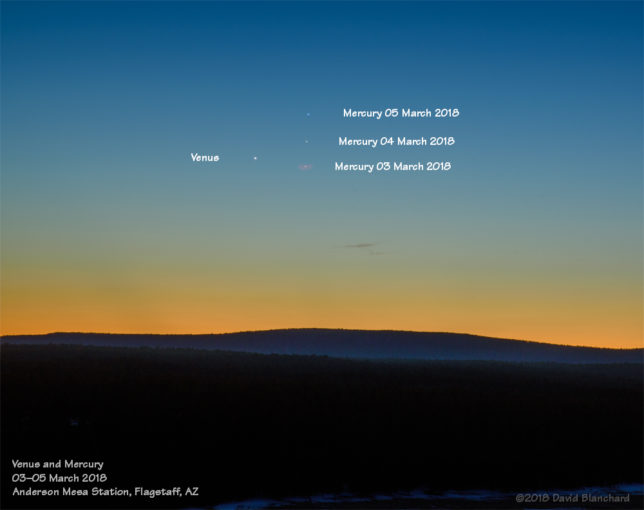
Now, back to the wave clouds.
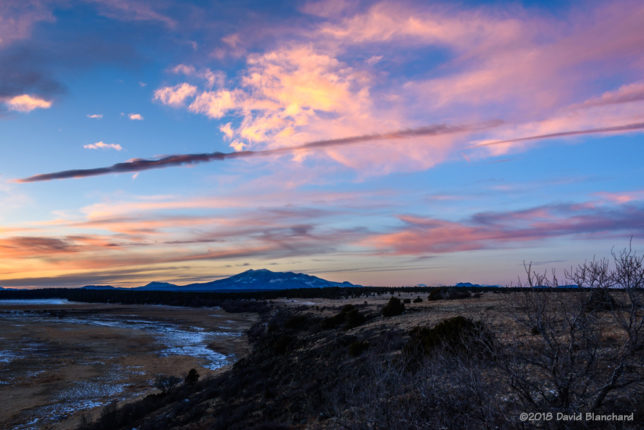
Although they look like jet contrails, these were actually long and thin wave clouds. As the sun began to set, the colors were briefly quite amazing.
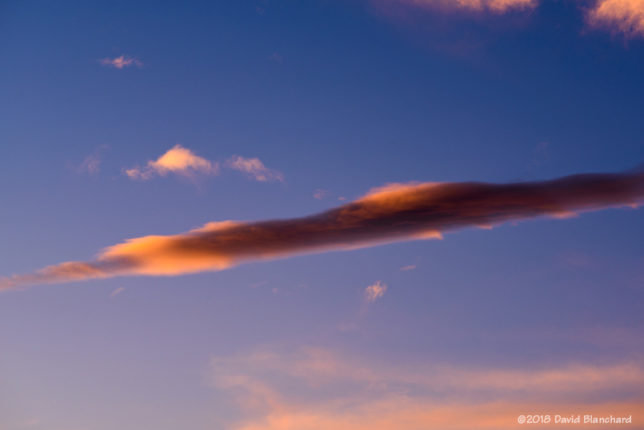
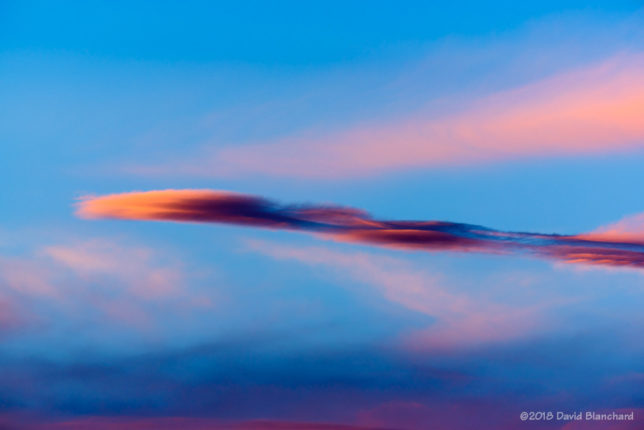
It was an fun evening: Interesting clouds and a triple conjunction.
It was also cold…
